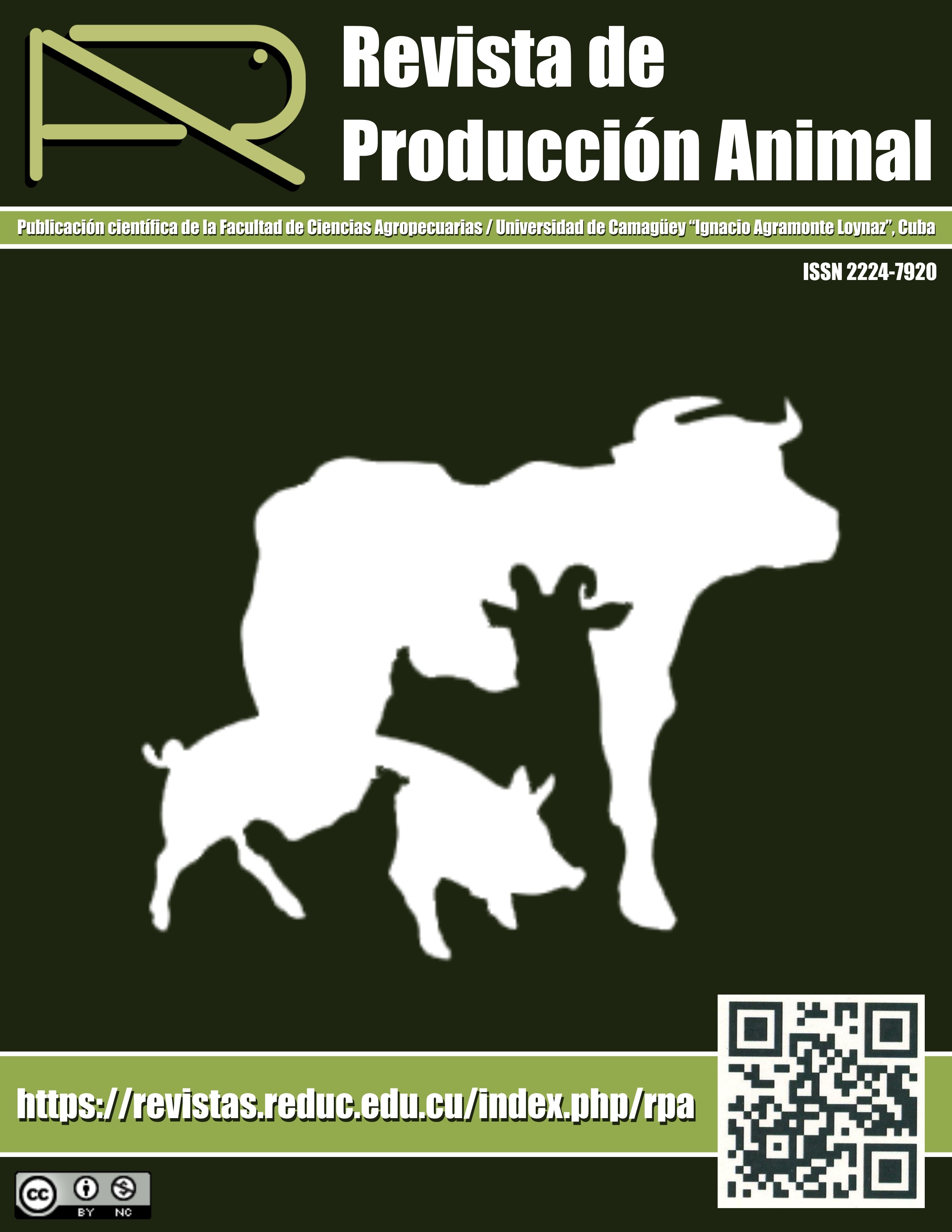Behavior, performance and carcass yield of steers with different comfort conditioning during the fattening period
Resumen
Objective. The aim of this study was to evaluate the behavior and performance of steers in two different housing areas (10 vs. 100 m2/animal) and two feeding models (daily supply vs. self-feeding) during the fattening period. Materials and methods: Forty-eight Hereford steers with initial live weight (LW): 214,0 kg were housed under four treatments: 100DS (100 m2/animal and daily supply), 100SF (100 m2/animal and self-feeding), 10DS (10 m2/animal and daily supply), 10SF (10 m2/animal and self-feeding) until reaching a final LW of 370 – 390 kg. Behavior was recorded by observation. Dry matter intake (DMI) and average daily gain (ADG) were recorded to estimate feed conversion ratio (FCR). Back fat thickness (BFT) and Longissimus muscle area (LMA) were measured. Steers were sent to a commercial abattoir to evaluate carcass yield. Results: The frequency of rest and walking was higher in steers in the largest housing area. Self-feeding contributed to the intake distribution during the day. No differences were detected in DMI, ADG and FCR. However, the confined animals (10DS and 10SF) produced more BFT and less LMA. In addition, they had less carcass yield at slaughter. Conclusions: Therefore, a larger housing area and the self-feeding model could contribute to express steers’ natural behavior and improve their performance.
KEYWORDS: animal welfare, cattle, feedlot, housing area, feeding (Source: MESH)





